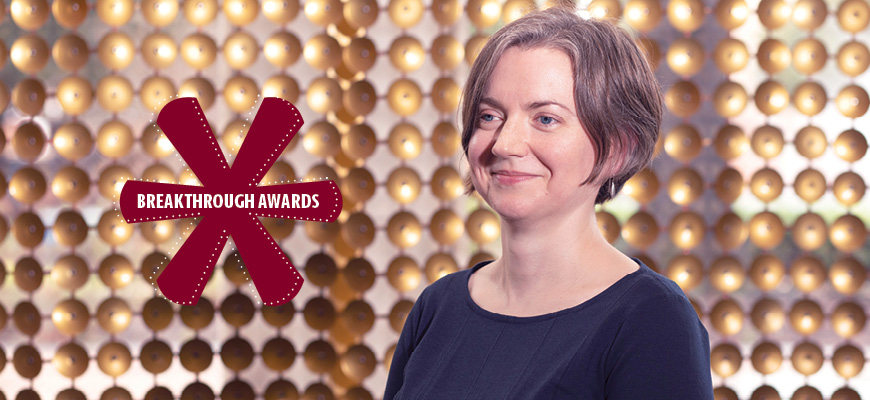
Breakthrough Star: Jeanne Britton
‘Intellectually fearless’ rare books curator gives old books new life
Posted on: September 3, 2020; Updated on: September 3, 2020
By Page Ivey, pivey@mailbox.sc.edu, 803-777-3085
Jeanne Britton loves old books and literature so she saw a dream job opportunity in 2014 when University Libraries advertised for a rare books curator who also would teach the literature found in those books.
“I’m using my academic background in the rare books department and incorporating special collections items in regular undergraduate courses,” says Britton, a 1999 Honors College graduate with a degree in English. “My tenure home is in University Libraries, but my Ph.D. is in comparative literature.”
Taking on opportunities for which she is not precisely trained is a big part of Britton’s research life. Working on her latest project, The Digital Piranesi, she has been described as “intellectually fearless.” The project involves digitizing a 29-volume set of the complete works of Giambattista Piranesi, an 18th century graphic artist and printmaker most known for his architectural studies of Rome.
The Irvin Rare Books and Special Collections at the University of South Carolina is home to one of fewer than 10 complete sets of Piranesi’s work. After years of creating views of Rome that he sold to tourists, Piranesi started drawing larger images and publishing them in books with accompanying text. The draw for Britton is the connection of Piranesi’s notes to the images.
“The images and the text were always very profoundly linked to each other, but they are rarely seen together today,” Britton says. “He has huge chunks of text where he’s talking about the genius of ancient artists and the meaning of beauty and the relationship between nature and art, and he’s imagining how the buildings were put together.”
Reconnecting these “lost” texts to Piranesi’s images a goal of the project, which recently received a $339,000 grant from the National Endowment for the Humanities.
Britton published her first book last year, Vicarious Narratives: A Literary History of Sympathy, 1750-1850 (Oxford University Press), which argues that fiction redefines sympathy as an experience of narrative that tries to accommodate rather than affirm human difference. One of the narratives that serves as an example is Mary Shelley’s Frankenstein, a first and third edition of which are housed at the Irvin Department.
“Frankenstein is a great example of the book’s argument, because it has three narrators,” Britton says. “The first one, Robert Walton, is the arctic explorer, and when he meets Victor Frankenstein he immediately starts telling Victor’s story in Victor’s voice.
“From there, we see Victor do the same thing when he encounters his monster — his creation that he had abandoned. The changes in perspective allow the readers to see events from several viewpoints.”
“It’s kind of a cliché, but I think it’s important when we say what it means to see something from another person’s point of view,” Britton says. “I think that Frankenstein and other novels that I talk about in the book are investigating the imaginative capacity for identifying with people who are not like you.”